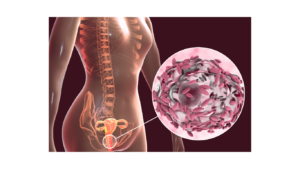Bacterial vaginosis (BV) is a common vaginal infection that affects many women worldwide. It occurs when there is an imbalance in the bacterial flora within the vagina, resulting in an overgrowth of harmful bacteria. In this article, we will explore the causes, symptoms, and available treatment options for bacterial vaginosis.
Table of Contents
What is Bacterial Vaginosis?
Causes of Bacterial sVaginosi
Risk Factors
Signs and Symptoms
Diagnosing Bacterial Vaginosis
Complications Associated with BV
Treatment Options
Home Remedies for BV
Preventive Measures
FAQs
Conclusion
1. What is Bacterial Vaginosis?

Bacterial vaginosis is a common vaginal infection caused by an imbalance in the bacteria present in the vagina. Normally, the vagina contains a delicate balance of both good and bad bacteria. However, in the case of bacterial vaginosis, there is an overgrowth of harmful bacteria, leading to various symptoms and discomfort.
2. Causes of Bacterial Vaginosis
The exact cause of bacterial vaginosis is still unknown, but several factors can contribute to its development. Some of the possible causes include:
Imbalance of vaginal bacteria:
A disruption in the natural balance of bacteria in the vagina can trigger the overgrowth of harmful bacteria, leading to BV.
Sexual activity:
particularly engaging in sexual intercourse with a new partner or multiple partners, can elevate the chances of acquiring bacterial vaginosis, a common vaginal infection.
Douching:

Regular douching or using scented feminine hygiene products can disturb the vaginal pH balance and increase the likelihood of BV.
Hormonal changes:
Fluctuations in hormone levels, such as during pregnancy or menopause, can create an environment favorable for bacterial overgrowth.
3. Risk Factors
Certain factors can increase a woman’s susceptibility to bacterial vaginosis. These include:
Multiple sexual partners
New sexual partner
Vaginal douching
Lack of vaginal lactobacilli
Smoking
IUD usage
Hormonal changes
Antibiotic use
4. Signs and Symptoms
Bacterial vaginosis may not always cause noticeable symptoms. Nevertheless, in cases where symptoms do manifest, they can encompass:
Thin, grayish-white vaginal discharge
Fishy odor, especially after sexual intercourse
Vaginal itching or irritation
Burning sensation during urination
It is important to note that these symptoms can be similar to those of other vaginal infections, so it is crucial to consult a healthcare professional for an accurate diagnosis.
5. Diagnosing Bacterial Vaginosis
To diagnose bacterial vaginosis, a healthcare provider will perform a pelvic examination and may also take a sample of vaginal discharge for further testing. The sample will be examined under a microscope or sent to a laboratory for analysis.
6. Complications Associated with BV
Although bacterial vaginosis is generally not considered a serious condition, if left untreated, it can lead to certain complications. Neglecting to treat bacterial vaginosis (BV) can potentially heighten the likelihood of:
Pelvic inflammatory disease (PID)
Sexually transmitted infections (STIs)
In pregnant women, untreated BV can raise the risk of delivering prematurely or having a baby with low birth weight.
Post-surgical infections in women undergoing gynecological procedures.
7. Treatment Options
The treatment for bacterial vaginosis typically involves the use of antibiotics.
Commonly prescribed antibiotics for BV include metronidazole and clindamycin.
These medications can be taken orally or applied directly to the vagina in the form of creams or gels.
It is important to complete the full course of antibiotics as prescribed, even if symptoms improve before the treatment is completed.
This helps to ensure the infection is fully eradicated and reduces the risk of recurrence.
8. Home Remedies for BV
While antibiotics are the primary treatment for bacterial vaginosis, certain home remedies may help alleviate symptoms and promote vaginal health. These include:
Probiotics:
Consuming probiotic-rich foods or taking probiotic supplements can help restore the natural balance of bacteria in the vagina.
Avoiding douching and scented products:
It is recommended to avoid douching and using scented soaps, as they can disrupt the vaginal pH and worsen BV symptoms.
Wearing breathable underwear:
Opt for cotton underwear and avoid tight-fitting clothes to allow better air circulation and prevent moisture buildup in the vaginal area.
9. Preventive Measures
To reduce the risk of developing bacterial vaginosis or experiencing recurrent infections, consider the following preventive measures:
Practice safe sex:
Using condoms can help protect against sexually transmitted infections that may contribute to BV.
Limit douching:
Avoid vaginal douching, as it disrupts the natural vaginal flora.
Maintain good hygiene:

Clean the vaginal area with mild, unscented soap and water. Avoid harsh chemicals or strong cleansers.
Choose underwear wisely:
Wear breathable cotton underwear and avoid tight-fitting clothes that can trap moisture.
FAQs
1. Can bacterial vaginosis be sexually transmitted?
No, bacterial vaginosis is not considered a sexually transmitted infection, although sexual activity can increase the risk of developing BV.
2. Is it possible for bacterial vaginosis to resolve on its own without intervention?
In some cases, bacterial vaginosis may resolve on its own without treatment.
3. Can men get bacterial vaginosis? However, it is advisable to consult a healthcare professional for accurate diagnosis and appropriate treatment.
No, bacterial vaginosis is an infection that primarily affects women. Men do not usually experience symptoms of BV, but they can carry and transmit the bacteria to their female partners.
4. Can I use over-the-counter treatments for bacterial vaginosis?
Over-the-counter treatments may provide temporary relief but are not recommended as a substitute for medical evaluation and prescribed antibioticsIt is optimal to seek guidance from a healthcare professional to obtain an accurate diagnosis and receive suitable treatment.
5. How can I prevent recurrent bacterial vaginosis?
To reduce the risk of recurrent bacterial vaginosis, practice safe sex, avoid douching, maintain good hygiene, and wear breathable underwear.
Conclusion
Bacterial vaginosis is a common vaginal infection that can cause discomfort and disruption in a woman’s life. By understanding the causes, symptoms, and available treatment options, women can take appropriate measures to manage and prevent bacterial vaginosis effectively. If you suspect you have BV or experience persistent symptoms, consult a healthcare professional for an accurate diagnosis and personalized treatment.

Pingback: top 3 Common Causes of Green Vaginal Discharge -
Pingback: top 3 Common Causes of Green Vaginal Discharge -